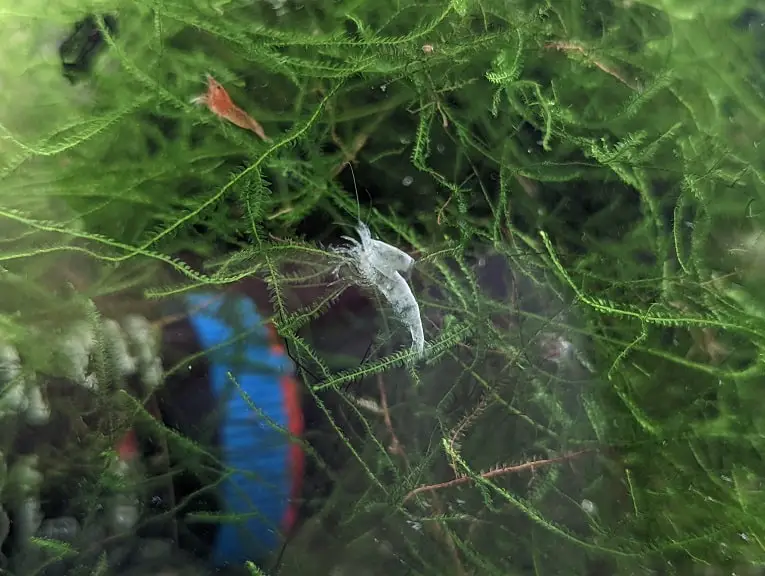If you keep Cherry Shrimps, also known as Neocaridina Shrimps, in your tank, then you will eventually white molted shells appear.
So, will your shrimps eat these old, discarded parts? You can find out in this guide from Aquarium Blueprints.
Why your Cherry Shrimps need to molt
In order to continue growing, your Cherries need to develop new shells and shed the older ones. Adults may molt every three to four weeks while the younger ones may molt every one to two weeks.
There are some scenarios where your shrimps may molt prematurely or wrongly, including the following circumstances:
- There is a big shift in water parameters. This may occur if you do too much of a water change.
- They may not have a healthy, balanced diet. Shrimps need minerals and proteins in order to develop healthy shells.
- Your shrimps are sick, old or both.
Cherry Shrimps usually pass away due to unsuccessful molts. Therefore, you should keep your water parameters as stable as possible and feed them a balanced diet in order to prevent deaths during the molting process.

What are Cherry Shrimps molt made of?
The Cherry Shrimps are made of calcium, chitin and protein. All three of these components are nutritious for your pet inverts.
Will Cherry Shrimps eat their molts?
Your shrimps will most likely eat their own molts, especially if there are no other food around. You can find a photo we captured featuring one of our Cherries picking apart a molted shell below:

If you don’t see them picking at the discarded shell, then we recommend waiting a day or two as they should get around to it eventually. You can also try not feeding your pet inverts for a day to see if the molts will eventually get consumed.
Should you remove the molts from your tank?
We don’t recommend removing the Cherry Shrimp molts from your aquarium. As we stated above, the shell is nutritious for your shrimps. If you have snails in the same tank, then they will help with the cleanup process as well.
We only recommend taking out the molt when you see fungus or other signs of potential bacterial infections developing as the discarded shell may end up causing health issues when consumed.
